General Atomics and NIF: Partners on a Mission
November 18, 2020
The National Ignition Facility and General Atomics are 417 miles apart. Yet scientists and engineers from Livermore and the San Diego-based company literally and figuratively work side-by-side, helping to keep the nation secure and expand the frontiers of science.
This decades-long symbiotic relationship between Lawrence Livermore National Laboratory (LLNL) and General Atomics (GA) produces a steady, reliable stream of about 10,000 precision target components per year. The components are central to NIF’s exploration into high energy density (HED) science, advanced weapons physics, and inertial confinement fusion (ICF) research.
It takes a special partnership to develop, test, and manufacture the target shells, hohlraums, and other related components needed for experiments on the world’s largest and most energetic laser.
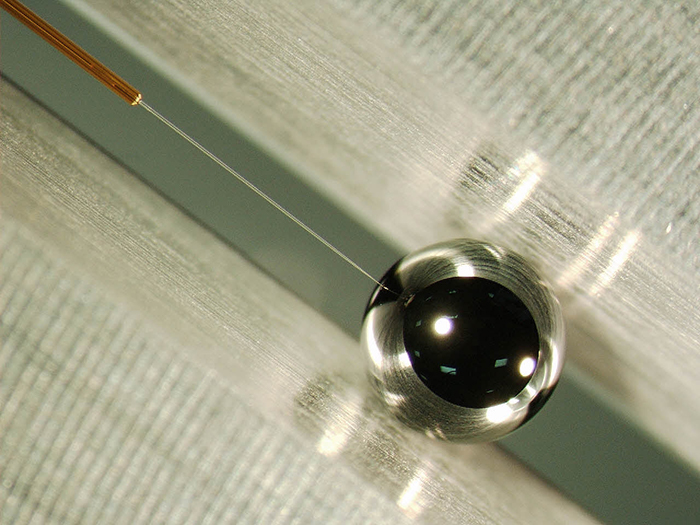
“We don’t just put in orders with GA like we do with other vendors,” says NIF Target Fabrication Program Manager Abbas Nikroo. “The work on the components is very collaborative. The parts produced in San Diego are all precision components that we cannot ‘buy’ anywhere else, but the capability has been developed through collaboration with LLNL over the years.”
GA is one of the more than 3,000 U.S. companies that NIF has partnered with, and each has contributed to NIF’s scientific advances. The partnership with GA, however, goes a step further. There are 38 GA scientists and specialists assigned to work at LLNL, including about 30 in Target Fabrication. Conversely, LLNL has about 10 employees embedded at GA’s headquarters in San Diego’s La Jolla district, working with magnetic fusion researchers there.
“The effort at San Diego is indeed an extension of what we do at LLNL,” Nikroo says.
“GA employees consider themselves part of a larger organization that has a mission, and that mission happens to be stockpile stewardship,” says Michael Farrell, vice president of General Atomics’ Inertial Fusion Technologies (IFT) division.
“About 90 percent of shots on NIF contain at least one component coming from GA,” Farrell says. “And a GA staff member is involved in 100 percent of the shots, whether it’s in fabrication or assembly or metrology.”
Farrell heads a 110-member organization that specializes in inertial fusion targets as part of GA’s Energy Group. The IFT team includes the GA employees embedded at LLNL and nine others working at Sandia National Laboratories and the Laboratory for Laser Energetics (LLE) at the University of Rochester.
“While we are separated by our physical locations, we’re really not separated by our missions or our tasks,” he says.
Spanning the Years
GA’s relationship with LLNL predates NIF’s groundbreaking in 1997 and the start of laser experiments in 2009.
The U.S. Department of Energy (DOE) first awarded GA the contract to provide ICF target fabrication services for LLNL in 1991. Then in 1994, DOE designated GA as the central target fabrication contractor for the nation’s entire ICF program, supporting fusion research at Sandia, Los Alamos National Laboratory (LANL), the U.S. Naval Research Laboratory (NRL), and LLE.
The move was made “to reduce duplication and save money,” Dan Goodin, a retired GA deputy IFT director, says.
Since the early 2000s, the LLNL-GA collaboration has expanded to include joint fabrication and assembly development of selected NIF target components, such as the delicate fill tubes that are less than one-tenth the diameter of a strand of human hair, yet must remain sturdy enough to survive injecting the ICF target shells with a deuterium-tritium fuel mix that is then cryogenically frozen.
Those target shells must be made to tolerances so exacting that they require techniques such as Atomic Force Microscopy, a device that measures spherical roundness and surface finish. The original device was developed at LLNL but was only able to do a few measurements each day. The technology was transferred to GA, which turned it into a production machine capable of performing up to 100 measurements per day.
The GA group takes pride in their ability to perfect spheres. Goodin remembers one manager who would always say “if the Earth was a target, it wouldn’t be round enough.”
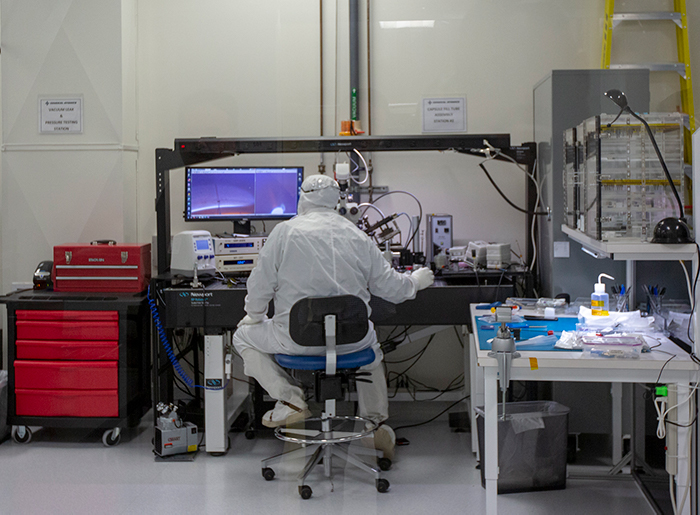
The collaboration also includes production of specialized targets, patterned foams, and doped metal foils needed for HED physics and equation-of-state experiments. GA has invested more than $50 million over the last 30 years into research and development to support NIF’s target needs, including for metrology and fabrication equipment, uranium and beryllium labs that require stringent ventilation and monitoring infrastructure, and stamping, injection molding, and robotic assembly methods.
It may seem unusual that GA has invested so much in the design and construction of such specialized equipment. But GA believes the investment is justified because of its commitment to the ICF program.
“There isn’t a commercial need for these types of product,” Farrell says. “Most companies are not going to want to invest in the technology, to develop it or allocate resources for this kind of application.”
However, GA’s specialized and dedicated contract with the National Nuclear Security Administration (NNSA), which oversees the nation’s Stockpile Security Program, “serves the needs of all of the labs, not just Livermore, but Sandia, Los Alamos, and Rochester,” Farrell says. GA’s work can also benefit academic researchers who can become the next generation of stockpile stewards.
GA’s developments for other labs means “such technologies can flow into the LLNL work as well,” Nikroo says. “At the same time, developments for LLNL can also benefit the effort nationally at the other labs. The same holds true for assembly and metrology development on site where the effort is seamless.”

LLNL and General Atomics personnel say they think of themselves as part of one seamless team.
While there are far too many instances to list, GA scientists and engineers have co-authored numerous research papers with their LLNL colleagues, such as a paper published earlier this year in Physics of Plasmas that included GA’s Noel Alfonso, Jay Crippen, and Neal Rice. The paper described how fill-tube assemblies using a sulfur-doped adhesive were constructed and tested for gas-tight integrity by GA (see “Angled Fill-Tubes Aid Quest to Raise NIF’s Implosion Performance”).
Alfonso also pioneered laser-cutting technology used in the development of foam hohlraum liners, work that also included GA’s Jarrod Williams, Hannah Reynolds, and Fred Elsner (see “The Softer Side of NIF Hohlraums”).
For a recent Discovery Science campaign using a hohlraum fitted with a magnetic-field coil, the principal investigator was GA scientist Mario Manuel. In another recent example, GA’s Terry Hilsabeck and Kyle Engelhorn helped develop the Icarus2 ultrafast multi-frame digital x-ray camera system (see “Icarus Camera Soars Close to NIF’s Sun—and Thrives!”).
And GA’s William Hoke was credited with assembling 1-millimeter-long compound parabolic concentrator (CPC) targets that helped achieve relativistic effects associated with significantly greater laser intensities (see “Focusing Targets Give Over 10x Performance Boost to NIF’s ARC”).
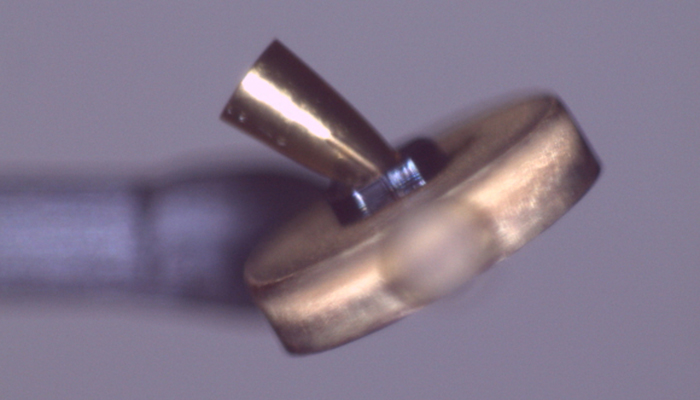
GA’s expertise in characterizing—the process of probing, measuring, or proving material properties—particularly shines in the production of the tiny hydrogen fuel shells that are the targets of the x rays produced inside the hohlraum by NIF’s 192 lasers.
“They do the characterization for all the shells," says Target Fabrication Deputy Program Manager Michael Stadermann, director of the LLNL Physical and Life Sciences Directorate’s Laboratory of Energy Applications for the Future. “They are the masters of characterization. We have instruments that do this as well up here, but they have much better apparatus for doing those measurements.”
Shrinking Fill Tubes
Some of the most challenging work has involved reducing the size of the capsule fill tubes from 10 microns in diameter.
“The fill tube work was one of the very first critical NIF components that involved both sides,” Nikroo says.
Fill tubes are used to fill the peppercorn-sized spherical shell with a mixture of deuterium and tritium (DT) fuel. The shell is then suspended inside the hohlraum. When NIF’s high-energy laser beams hit the hohlraum’s inner walls, they generate x rays that trigger a fusion reaction as the DT mixture compresses into an energy-generating hot spot.
But researchers determined the 10-micron fill tubes caused perturbations that degraded NIF’s implosion performance. So over the years, NIF and GA researchers worked on the challenges of reducing the size of the fill tube, first to 5 microns and then to 2 microns. The result has improved implosion performance (see “Two-Micron Fill Tubes Fill Two Needs”).
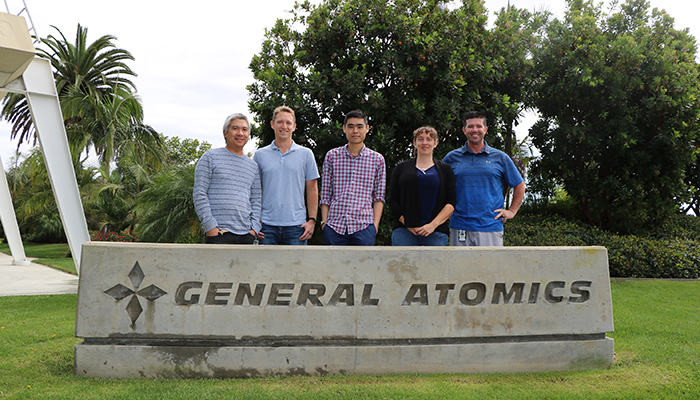
Those efforts included not only changing the ways the hole for the fill tube was created in the target shell, but also how the shells and tubes were manufactured and attached—while making sure they didn’t break or fail during transportation, installation, or the experiment. And each method required constant testing to make sure the production process could be repeated as much as possible to meet NIF’s experimental cadence of nearly 400 shots per year.
“That is basically one of the missions of General Atomics, to take some of our research and development and not just make one prototype,” Farrell says. “GA has the capacity to make eight of their capsule fill tube assemblies a week. Originally, we could only make one a week and then most of them would break.”
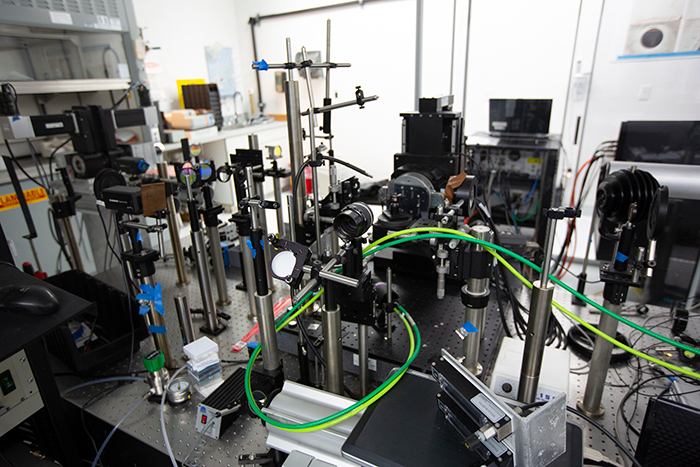
Each step required a painstaking learning curve. At 10 microns, the yield of successfully produced capsule and fill tube assemblies was nearly 100 percent. But that production yield dropped to 50 percent with the first 5-micron tubes. When production yields rose back to nearly 100 percent, target researchers had to learn all over again in the quest to reach a diameter of 2 microns.
“The GA team in San Diego is very much aware of the use of the components,” Nikroo says. “They chime in on what’s needed from metrology, improvements to the processes, and the development of new components because the targets are the one ever-changing part of NIF experiments. The experiment itself is the target and GA has been in lock-step with the work at Livermore.”
Farrell notes that another major challenge came about 15 years ago when Livermore asked GA to work on making hohlraums out of depleted uranium, which at the time “was really an impossible request. But with time and effort, now we have a uranium hohlraum that’s fairly stable and we can machine it pretty much to any shape you want.
“It was a strong collaboration between Livermore and GA staff working through the science and the operational data to enable the solutions,” he says. “It doesn’t happen overnight, but with attention, you can pretty much push any problem forward and make significant progress on it.”
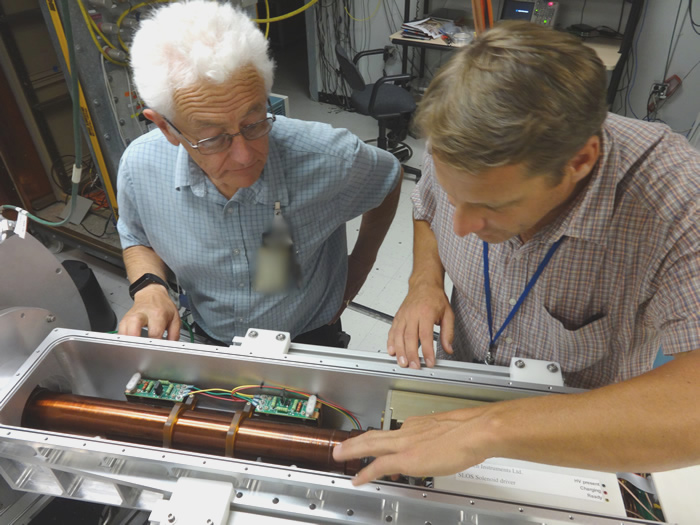
LLNL and GA have benefited from leaders who have seen those solutions from both sides.
For example, Joe Kilkenny, who led NIF’s ICF Program from 1995 to 2001 and is currently NIF’s scientific diagnostics program leader, is vice president for high energy density physics at General Atomics.
David Hill went from Livermore to GA to become director of the GA-hosted DIII-D National Fusion Facility, the nation’s largest magnetic fusion facility (Hill recently retired). Meanwhile, Anantha Krishnan, who retired in October as associate laboratory director for LLNL’s Engineering Directorate, was recently named senior vice president of GA’s Energy Group.
"Such exchanges of personnel have led to a better understanding between the two organizations, and to a higher level of collaboration and partnership needed to address the technical challenges in target design and fabrication," Krishnan says.And Nikroo, who joined LLNL in 2015, led the target fabrication effort at GA for six years after serving for 14 years as a target fabrication scientist and manager.
Nikroo has also acted as a courier of sorts since the mid-2000s. Capsule fill tube assemblies are so delicate, they can break if mailed using a standard package shipping service, so they need to be carried by hand on a commercial plane.
While at GA, Nikroo was flying to the Bay Area and back weekly to consult with LLNL researchers and learn what the Target Fabrication team needed, so he volunteered to carry the targets up.
“When I came up to Livermore to work, I would continue to do the courier work, going the opposite way,” he says.
That personal dedication to the mission has shown up in other ways.
Former IFT Deputy Director Dan Goodin, who worked at GA from 1980 until he retired about four years ago, remembers a time when a NIF experimenter told the GA team on the Friday before a holiday that changes in a component would be needed to meet an important experiment scheduled the following Tuesday.
The team worked through the holiday weekend to get the job done. “It’s not just a widget that anyone else can make,” Goodin says. “It’s a sole-source contract because no one else can do it.”
And that kind of team spirit, solving tasks that seem impossible, is what motivates Farrell.
“There’s always a challenge,” Farrell says. “For me, on a personal level, I really enjoy the challenge of taking an idea and then bringing it to life. That’s what the national labs do, they put their multiple brains together to solve those problems. GA happens to be a contributor to those solutions.”
—Benny Evangelista
Follow us on Twitter: @lasers_llnl





